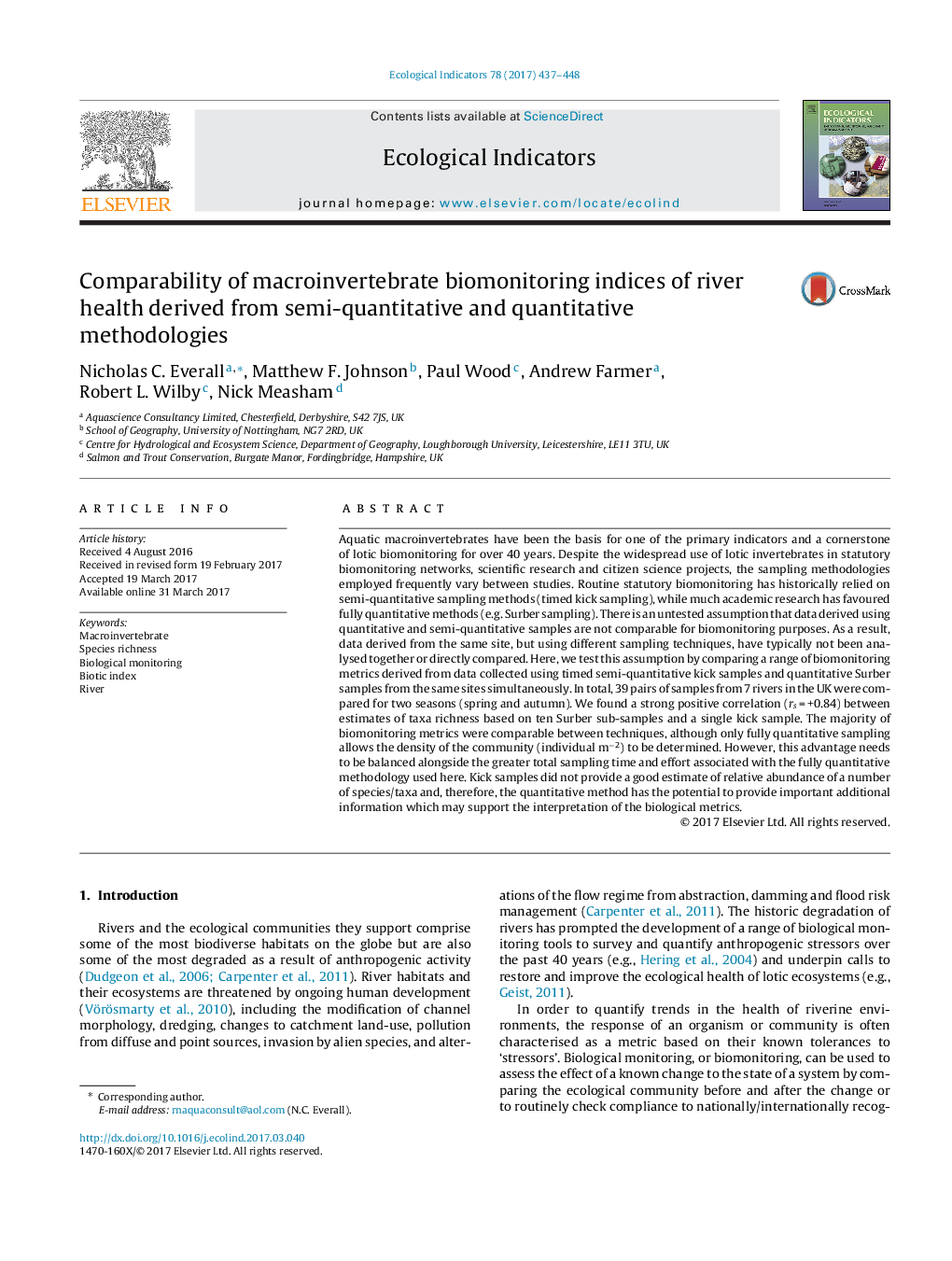| Article ID | Journal | Published Year | Pages | File Type |
|---|---|---|---|---|
| 5741651 | Ecological Indicators | 2017 | 12 Pages |
â¢Kick samples under-represent taxa abundance collected in equivalent Surber samples.â¢Some taxa preferentially found in Surber samples over kick samples and vice versa.â¢Biomonitoring scores are very similar between kick and Surber sampled data.â¢Abundance-weighted biomonitoring scores most similar between sampling methods.
Aquatic macroinvertebrates have been the basis for one of the primary indicators and a cornerstone of lotic biomonitoring for over 40 years. Despite the widespread use of lotic invertebrates in statutory biomonitoring networks, scientific research and citizen science projects, the sampling methodologies employed frequently vary between studies. Routine statutory biomonitoring has historically relied on semi-quantitative sampling methods (timed kick sampling), while much academic research has favoured fully quantitative methods (e.g. Surber sampling). There is an untested assumption that data derived using quantitative and semi-quantitative samples are not comparable for biomonitoring purposes. As a result, data derived from the same site, but using different sampling techniques, have typically not been analysed together or directly compared. Here, we test this assumption by comparing a range of biomonitoring metrics derived from data collected using timed semi-quantitative kick samples and quantitative Surber samples from the same sites simultaneously. In total, 39 pairs of samples from 7 rivers in the UK were compared for two seasons (spring and autumn). We found a strong positive correlation (rs = +0.84) between estimates of taxa richness based on ten Surber sub-samples and a single kick sample. The majority of biomonitoring metrics were comparable between techniques, although only fully quantitative sampling allows the density of the community (individual mâ2) to be determined. However, this advantage needs to be balanced alongside the greater total sampling time and effort associated with the fully quantitative methodology used here. Kick samples did not provide a good estimate of relative abundance of a number of species/taxa and, therefore, the quantitative method has the potential to provide important additional information which may support the interpretation of the biological metrics.
